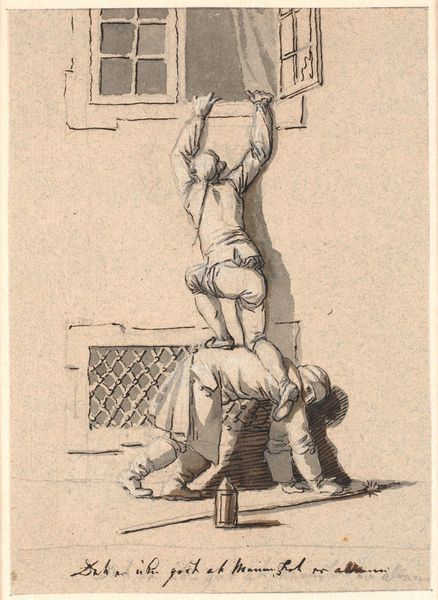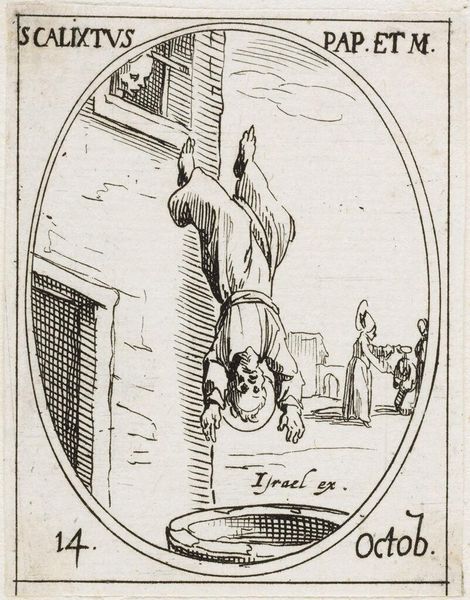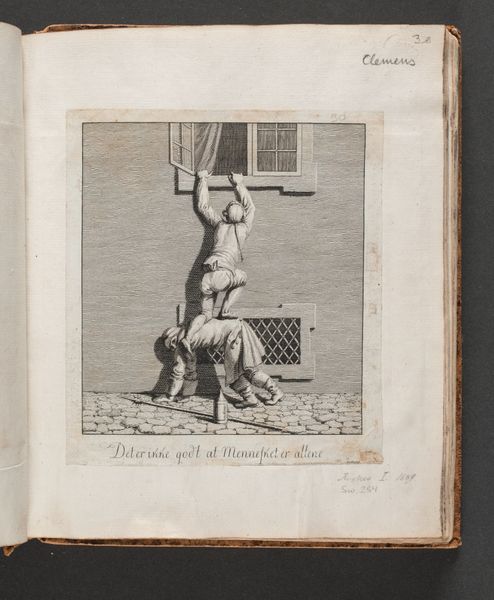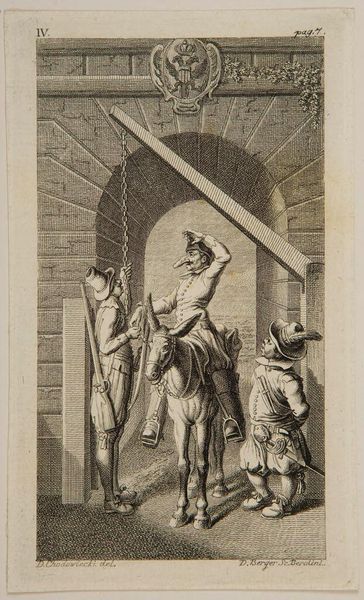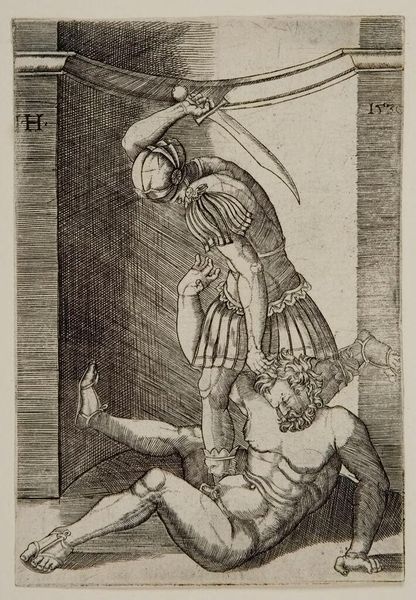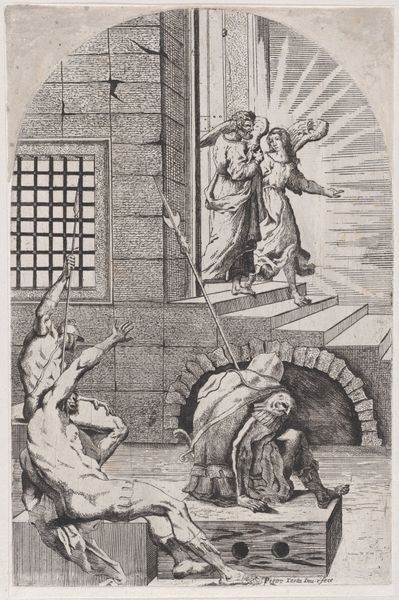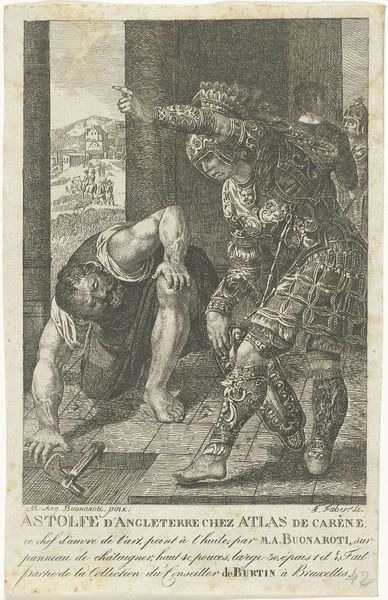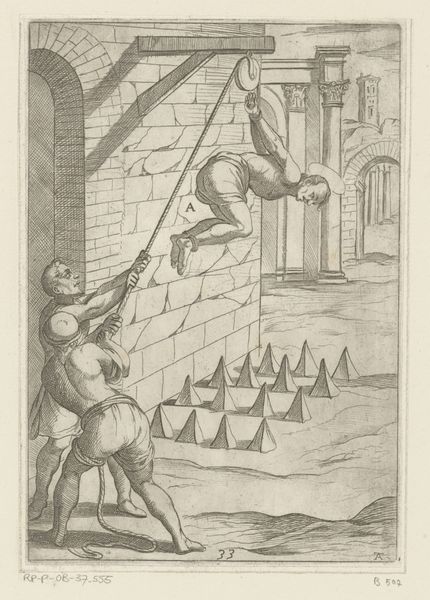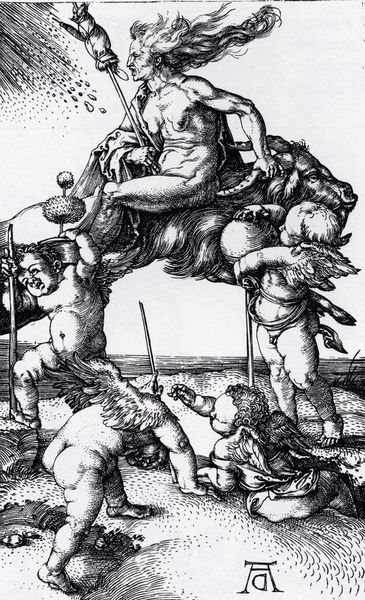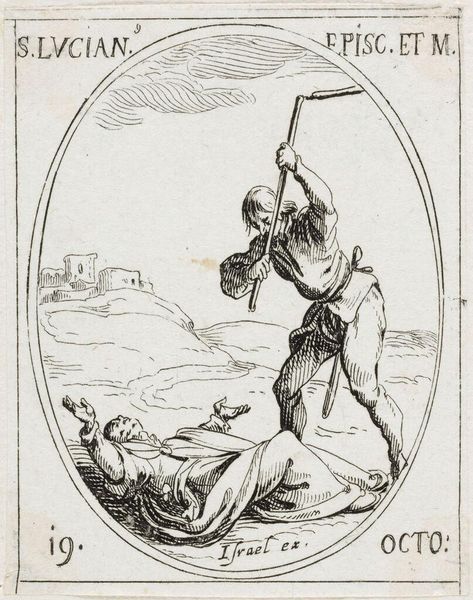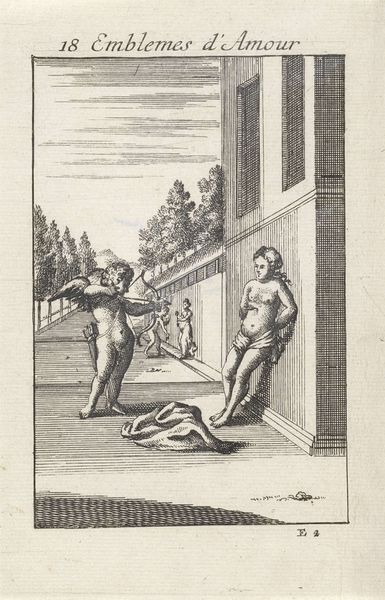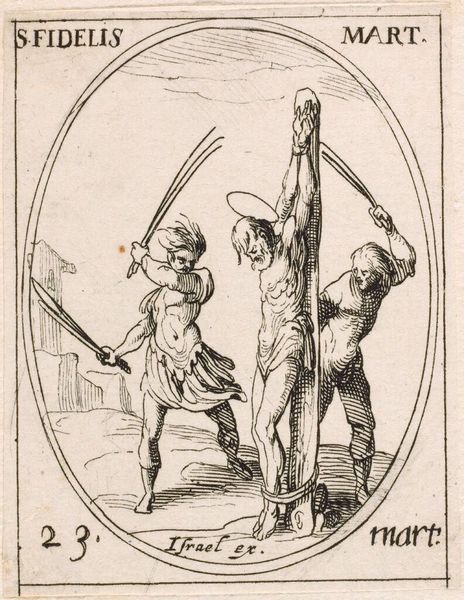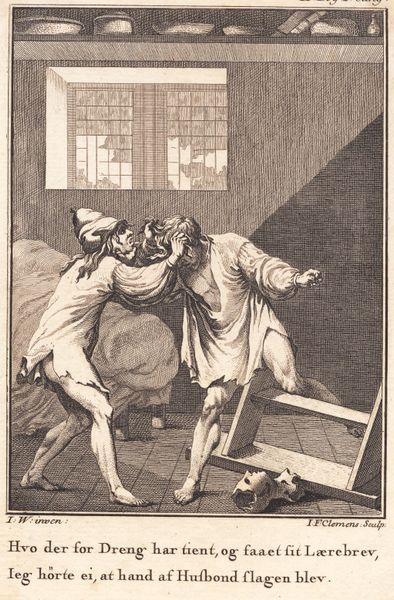
print, etching, engraving
#
portrait
# print
#
etching
#
caricature
#
old engraving style
#
line
#
history-painting
#
academic-art
#
engraving
Dimensions: 189 mm (height) x 161 mm (width) (bladmaal), 182 mm (height) x 155 mm (width) (plademaal), 135 mm (height) x 123 mm (width) (billedmaal)
Curator: Oh, I love this little scene. This etching from 1787, by J.F. Clemens, is called "It is not good that the man is alone." Such a simple title, but so evocative. Editor: Well, immediately it strikes me as a visual pun, this literal depiction of interdependence! The somewhat desperate body language adds to the comedic effect. I notice a very "old engraving style," perhaps inspired by academic art, making the work resemble a historical painting—it invites inquiry into gender dynamics of the late 18th century. Curator: Exactly! Clemens was so good at capturing the ridiculous in the everyday. Here we have two figures—one is bent over double, providing a human ladder for the other, who is clambering up to a window. There's this lovely awkwardness; you can almost feel the strain, and the trust! Editor: Trust, and dependence but also, potential for exploitation. The man on top achieves his goal, climbing to what can be assumed is another person's house, based on the sacrifice - the bent back - of the figure beneath. The bottle there on the ground adds a subtle layer, perhaps insinuating inebriation facilitated this "partnership"? And who benefits the most? Curator: You think so? I'm not sure it’s quite so cynical. For me, there's a certain camaraderie, you know? Like that saying about friends helping you move; they're there in the thick of it, even when it’s backbreaking labor! There’s something touching about the blatant need for one another in this image. Plus, the light is just beautiful. Editor: Light and shadow highlight the unbalanced physicality; one literally elevating himself through the labor of another. What is so captivating to me is Clemens’s use of caricature, which opens this up as a satire. It begs for consideration of how society organizes itself and decides the winners. The composition highlights their connected dependency but I read it as far more ironic than affectionate. Curator: Maybe. Or maybe it's just two blokes helping each other out, drawn with a wink and a nod. Either way, Clemens' skill really shines here—I mean, those finely etched lines... marvelous. Editor: Absolutely! The fineness allows for complexity—we, as viewers, interpret Clemens, Clemens mirrors us and each other, inviting a multitude of narratives about cooperation and imbalance. Curator: Exactly, it all comes together in such a clever print that feels very fresh. It is difficult to resist analyzing the details here. It just has so much soul, wouldn’t you agree? Editor: Yes, in its deceptively simple rendering of social dynamics, Clemens' etching provides a potent moment for reflecting on history and power.
Comments
No comments
Be the first to comment and join the conversation on the ultimate creative platform.
